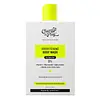What's inside
What's inside
 Key Ingredients
Key Ingredients

 Benefits
Benefits

 Concerns
Concerns

 Ingredients Side-by-side
Ingredients Side-by-side

Water
Skin ConditioningCocamidopropyl Betaine
CleansingSodium C14-16 Olefin Sulfonate
CleansingSorbitol
HumectantGlycerin
HumectantNiacinamide
SmoothingSodium Lauroyl Sarcosinate
CleansingPEG-150 Distearate
EmulsifyingGlycolic Acid
BufferingParfum
MaskingPEG-7 Glyceryl Cocoate
Emulsifying3-O-Ethyl Ascorbic Acid
Skin ConditioningAlpha-Arbutin
AntioxidantCeramide Ag
HumectantOryza Sativa Cera
Skin ConditioningPhospholipids
Skin ConditioningSphingolipids
EmollientGuar Hydroxypropyltrimonium Chloride
Skin ConditioningPropanediol
SolventMyrciaria Dubia Fruit Extract
Skin ConditioningPhenoxyethanol
PreservativeCI 19140
Cosmetic ColorantDisodium EDTA
Sodium Hydroxide
BufferingWater, Cocamidopropyl Betaine, Sodium C14-16 Olefin Sulfonate, Sorbitol, Glycerin, Niacinamide, Sodium Lauroyl Sarcosinate, PEG-150 Distearate, Glycolic Acid, Parfum, PEG-7 Glyceryl Cocoate, 3-O-Ethyl Ascorbic Acid, Alpha-Arbutin, Ceramide Ag, Oryza Sativa Cera, Phospholipids, Sphingolipids, Guar Hydroxypropyltrimonium Chloride, Propanediol, Myrciaria Dubia Fruit Extract, Phenoxyethanol, CI 19140, Disodium EDTA, Sodium Hydroxide
Water
Skin ConditioningAcrylates Copolymer
Sodium Lauroyl Sarcosinate
CleansingCoco-Glucoside
CleansingCocamidopropyl Betaine
CleansingTriethanolamine
BufferingSalicylic Acid
MaskingErythritol
HumectantPhenoxyethanol
PreservativeEthylhexylglycerin
Skin ConditioningSaccharide Isomerate
HumectantCitric Acid
BufferingChamomilla Vulgaris Extract
Skin ProtectingSodium Citrate
BufferingSodium Edtmp
CI 42090
Cosmetic ColorantIngredients Explained
These ingredients are found in both products.
Ingredients higher up in an ingredient list are typically present in a larger amount.
Cocamidopropyl Betaine is a fatty acid created by mixing similar compounds in coconut oil and dimethylaminopropylamine, a compound with two amino groups.
This ingredient is a surfactant and cleanser. It helps gather the dirt, pollutants, and other impurities in your skin to be washed away. It also helps thicken a product and make the texture more creamy.
Being created from coconut oil means Cocamidopropyl Betaine is hydrating for the skin.
While Cocamidopropyl Betaine was believed to be an allergen, a study from 2012 disproved this. It found two compounds in unpure Cocamidopropyl Betaine to be the irritants: aminoamide and 3-dimethylaminopropylamine. High-grade and pure Cocamidopropyl Betaine did not induce allergic reactions during this study.
Learn more about Cocamidopropyl BetainePhenoxyethanol is a preservative that has germicide, antimicrobial, and aromatic properties. Studies show that phenoxyethanol can prevent microbial growth. By itself, it has a scent that is similar to that of a rose.
It's often used in formulations along with Caprylyl Glycol to preserve the shelf life of products.
Sodium Lauroyl Sarcosinate is a cleansing agent and emulsifier. It is a surfactant derived from sarcosine, and a common source is coconut oil.
As a surfactant, Sodium Lauroyl Sarcosinate helps lift dirts, oil, and other molecules to be washed away. In leave-on products, this ingredient is used as an emulsifier. Emulsifier help prevent ingredients such as oils and waters from separating.
Sodium Lauroyl Sarcosinate is also commonly found as a foaming agent in shampoo, toothpaste, and shaving foam. It is amphiphilic, meaning it loves both water and fats.
Learn more about Sodium Lauroyl SarcosinateWater. It's the most common cosmetic ingredient of all. You'll usually see it at the top of ingredient lists, meaning that it makes up the largest part of the product.
So why is it so popular? Water most often acts as a solvent - this means that it helps dissolve other ingredients into the formulation.
You'll also recognize water as that liquid we all need to stay alive. If you see this, drink a glass of water. Stay hydrated!
Learn more about Water